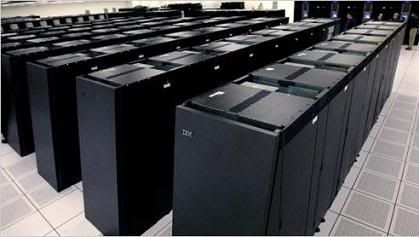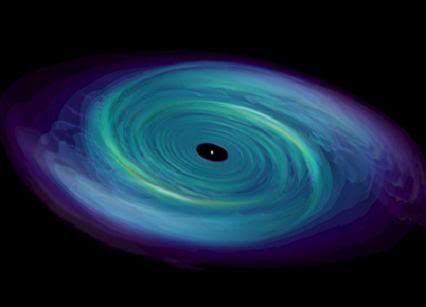Post by glactus on Oct 21, 2009 7:51:45 GMT

Artist's rendering of a Black Hole
Scietists at the Rochester Institute of Technology have won several grants to further extend their own supercomputer and make use of two of the fastest supercomputers in the world in their quest to shine light on Black Holes.

Petascale supercomputer
Since light cannot escape from the surface of a Black Hole, scientists rely on computer algorithms to study the massive dark objects. Researchers in the Center for Computational relativity and Gravitation use computers to study what cannot be seen directly.

A Black Hole
"It is a thrilling time to study Black Holes." Says Manuela Campanelli, center director. "we're nearing the point where our calculations will be used to test out one of the last unexplored aspects of Einstein's general theory of relativity, possibly confirmng that it properly describes the strongest gravitational fields in the Universe."
Three National Science Foundation awards have brought the center's external funding total to $2.9 milion in the past 3 years. The awards - plus time won on a top supercomputer - will dramatically enhance the team's access to the most sophisticated computer power in the world.
RIT's center for computational relativity and gravitation is one of two relativity groups that won a National Science Foundation petascale computing resource allocation grant reserving time on a super- supercomputer called "Blue Waters."
The Machine is sheduled to begin production in 2011 at the University of Illinois' national center for supercomputing applications. Blue Waters, which will consist of more than 200,000 processing cores, is expected to be the most powerful supercomputer in the world for open scientific research.
Albert Einstein;s institute at Oak Ridge national laboratory developes tools for understanding many of the most energetic events observed inAstronomy, from millisecond long bursts of gamma rays to active galactic nuclei, that constantly emit more than a trillion suns' worth of energy.
"Computers are only going to get better and faster over the coming years, says Campanelli," And with these grants and allocations, RIT's numerical relativity group should stay at the forefront of scientific computation for years to come."
Credits: Images:
www.spacetelescope.org/images/screen/heic0409a.jpg
www.lancs.ac.uk/ug/heysm/accretion_mpowen_full.jpg
See more at Space daily.com
www.spacedaily.com/reports/Scientists_Use_Supercomputers_To_See_Black_Holes_999.html


